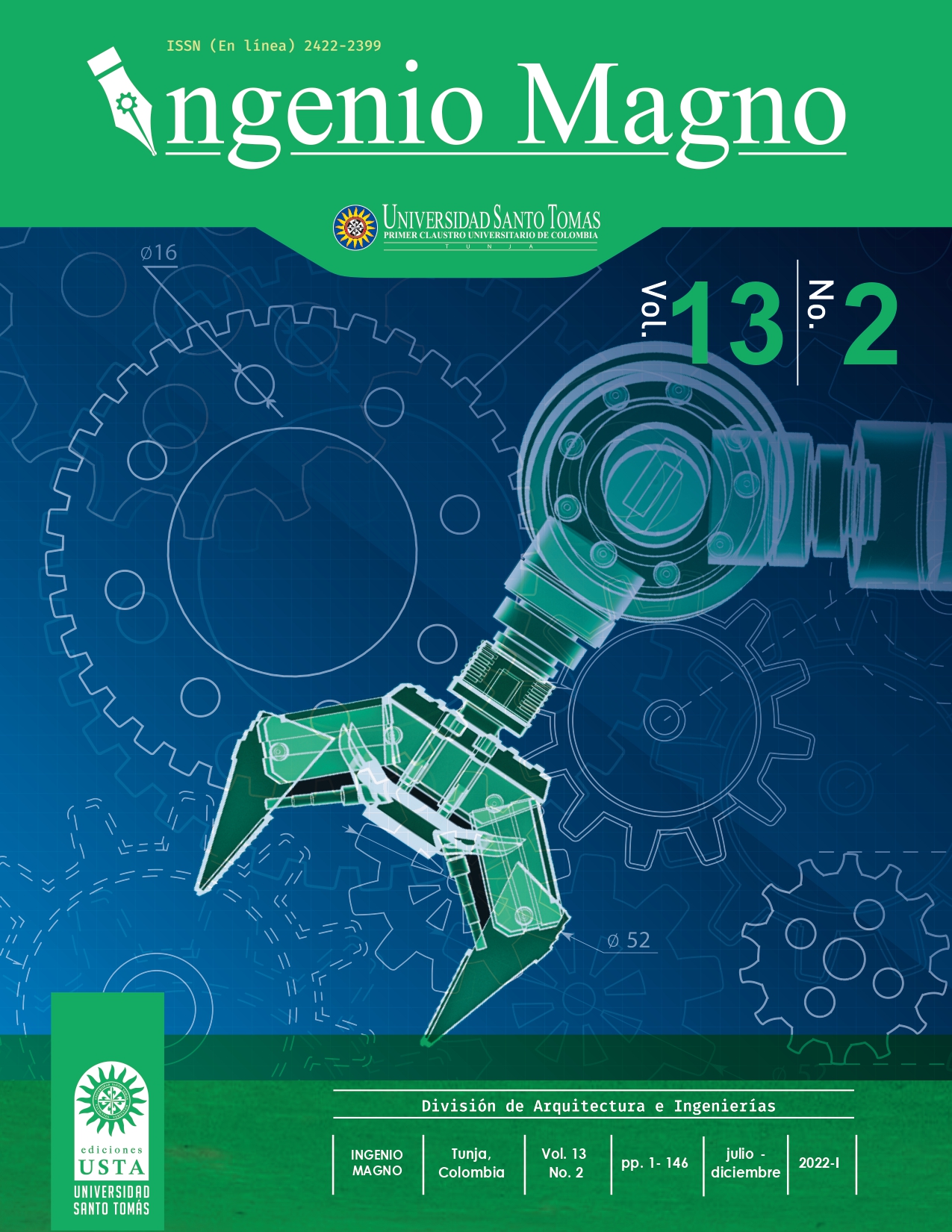Estudio del Mecanismo de Pirólisis de Residuos de Yuca Mediante Análisis Termogravimétrico Acoplado a la Espectroscopía Infrarroja
Main Article Content
Abstract
Downloads
Article Details
DECLARATION OF ORGINIALITY OF SUBMITTED ARTICLE
With this document, I/We certify that the article submitted for possible publication in the institutional journal INGENIO MAGNO of the Research Center Alberto Magno CIIAM of the University Santo Tomás, Tunja campus, is entirely of my(our) own writing, and is a product of my(our) direct intellectual contribution to knowledge.
All data and references to completed publications are duly identified with their respective bibliographical entries and in the citations thus highlighted. If any adjustment or correction is needed, I(we) will contact the journal authorities in advance.
Due to that stated above, I(we) declare that the entirety of the submitted material is in accordance with applicable laws regarding intellectual and industrial property, and therefore, I(we) hold myself(ourselves) responsible for any complaint related to it.
If the submitted article is published, I(we) declare that I(we) fully relinquish publishing rights of the article to the University Santo Tomás, Tunja campus. As remuneration for this relinquishment of rights, I(we) declare my(our) agreement to receive two (2) copies of the edition of the journal in which my(our) article appears.
References
[2] Tursi A. A review on biomass: Importance, chemistry, classification, and conversion. Biofuel Res J. 2019;6(2):962-979. doi:10.18331/BRJ2019.6.2.3
[3] Okolie JA, Nanda S, Dalai AK, Kozinski JA. Chemistry and Specialty Industrial Applications of Lignocellulosic Biomass. Waste and Biomass Valorization. 2021;12(5):2145-2169. doi:10.1007/s12649-020-01123-0
[4] Poveda-Giraldo JA, Solarte-Toro JC, Cardona Alzate CA. The potential use of lignin as a platform product in biorefineries: A review. Renew Sustain Energy Rev. 2021;138(January):110688. doi:10.1016/j.rser.2020.110688
[5] Lepage T, Kammoun M, Schmetz Q, Richel A. Biomass-to-hydrogen: A review of main routes production, processes evaluation and techno-economical assessment. Biomass and Bioenergy. 2021;144(November 2020):105920. doi:10.1016/j.biombioe.2020.105920
[6] Alhazmi H, Loy ACM. A review on environmental assessment of conversion of agriculture waste to bio-energy via different thermochemical routes: Current and future trends. Bioresour Technol Reports. 2021;14(March):100682. doi:10.1016/j.biteb.2021.100682
[7] Nanduri A, Kulkarni SS, Mills PL. Experimental techniques to gain mechanistic insight into fast pyrolysis of lignocellulosic biomass: A state-of-the-art review. Renew Sustain Energy Rev. 2021;148(July 2020):111262. doi:10.1016/j.rser.2021.111262
[8] Weerachanchai P, Tangsathitkulchai C, Tansathitkulchai M. Comparison of pyrolysis kinetic models for thermogravimetric analysis of biomass. Suranaree J Sci Technol. 2010;17(4):387-400.
[9] Huang H, Liu J, Liu H, Evrendilek F, Buyukada M. Pyrolysis of water hyacinth biomass parts: Bioenergy, gas emissions, and by-products using TG-FTIR and Py-GC/MS analyses. Energy Convers Manag. 2020;207(February):112552. doi:10.1016/j.enconman.2020.112552
[10] Larkin P. INFRARED AND RAMAN SPECTROSCOPY: PRINCIPLES AND SPECTRAL INTERPRETATION. Vol 9. 1st ed. (Elsevier, ed.). Elsevier; 2011. doi:10.3390/rel9100297
[11] Müsellim E, Tahir MH, Ahmad MS, Ceylan S. Thermokinetic and TG/DSC-FTIR study of pea waste biomass pyrolysis. Appl Therm Eng. 2018;137(March):54-61. doi:10.1016/j.applthermaleng.2018.03.050

